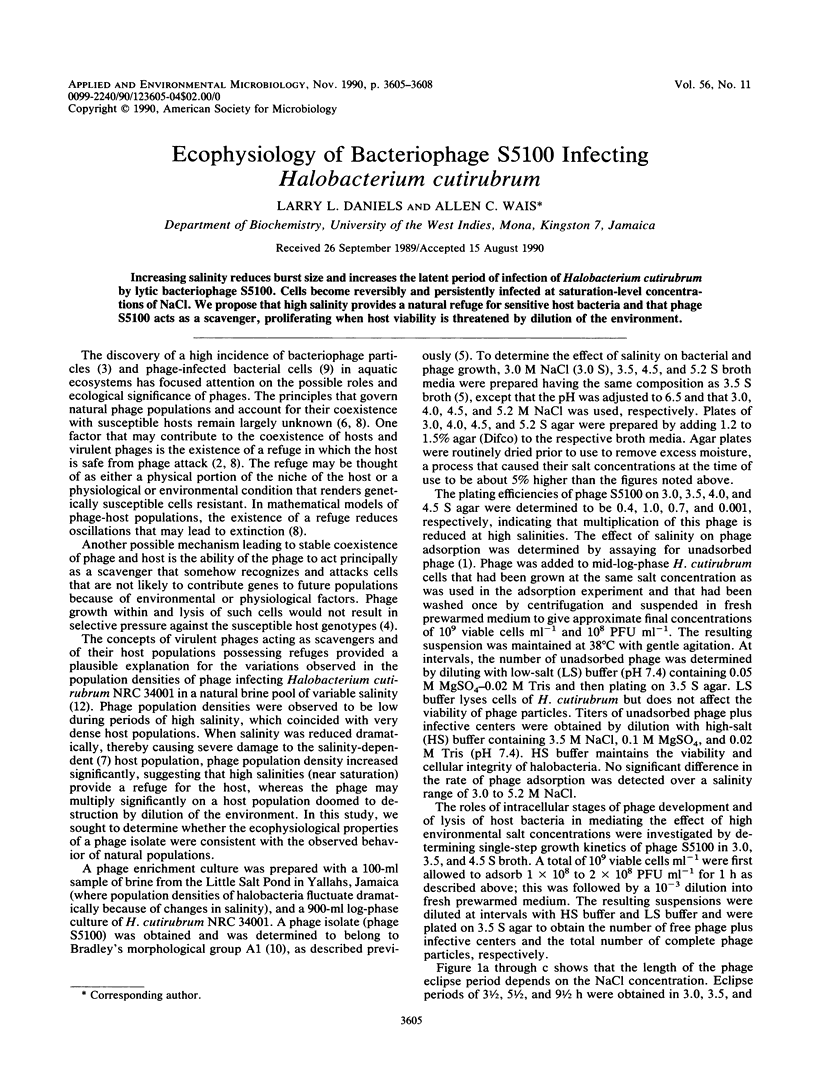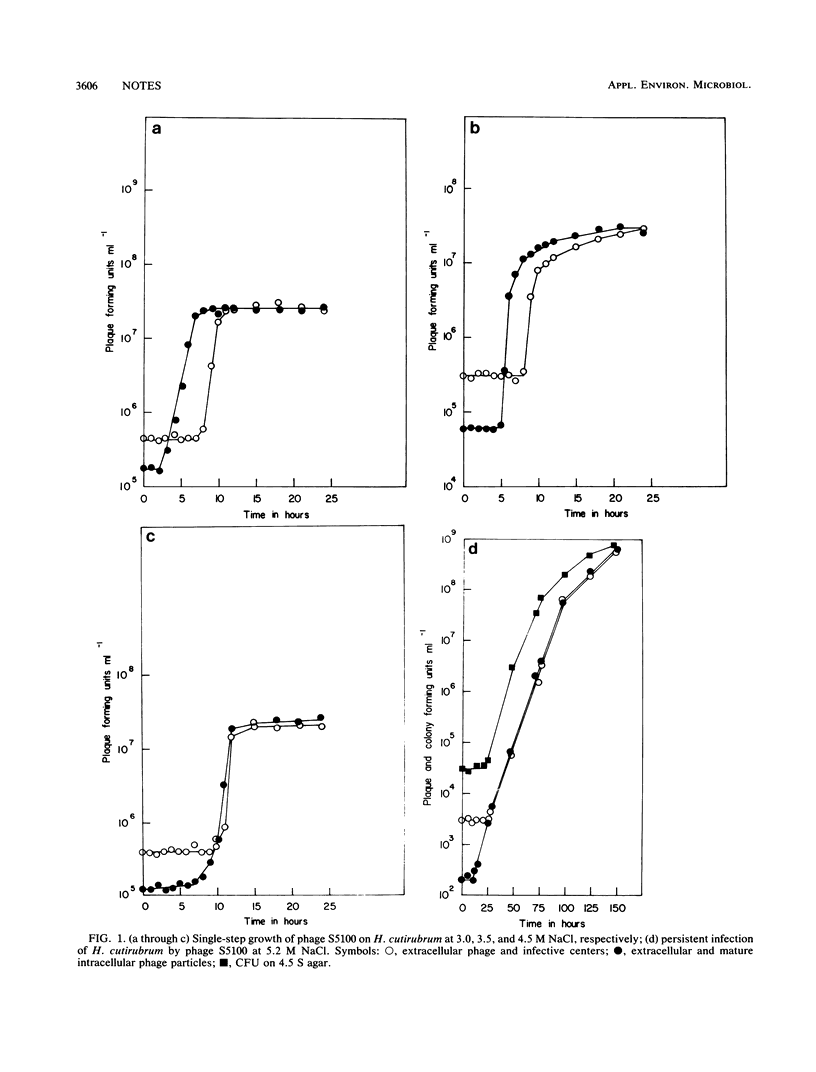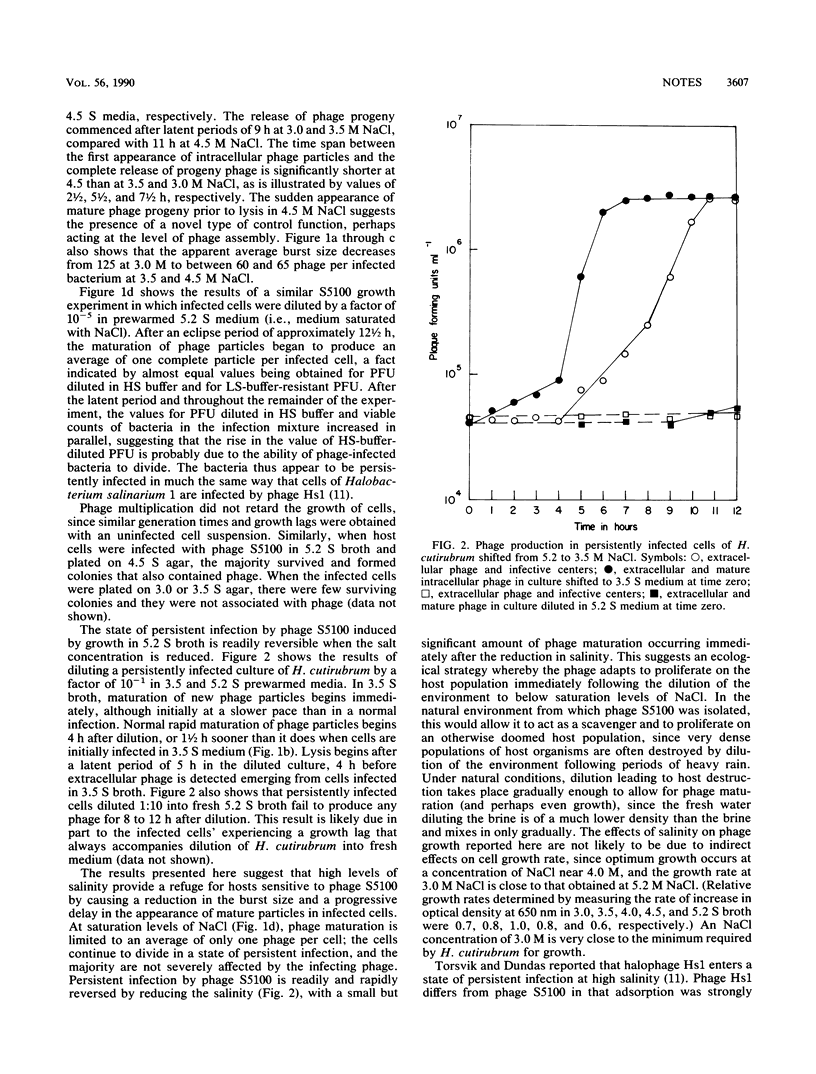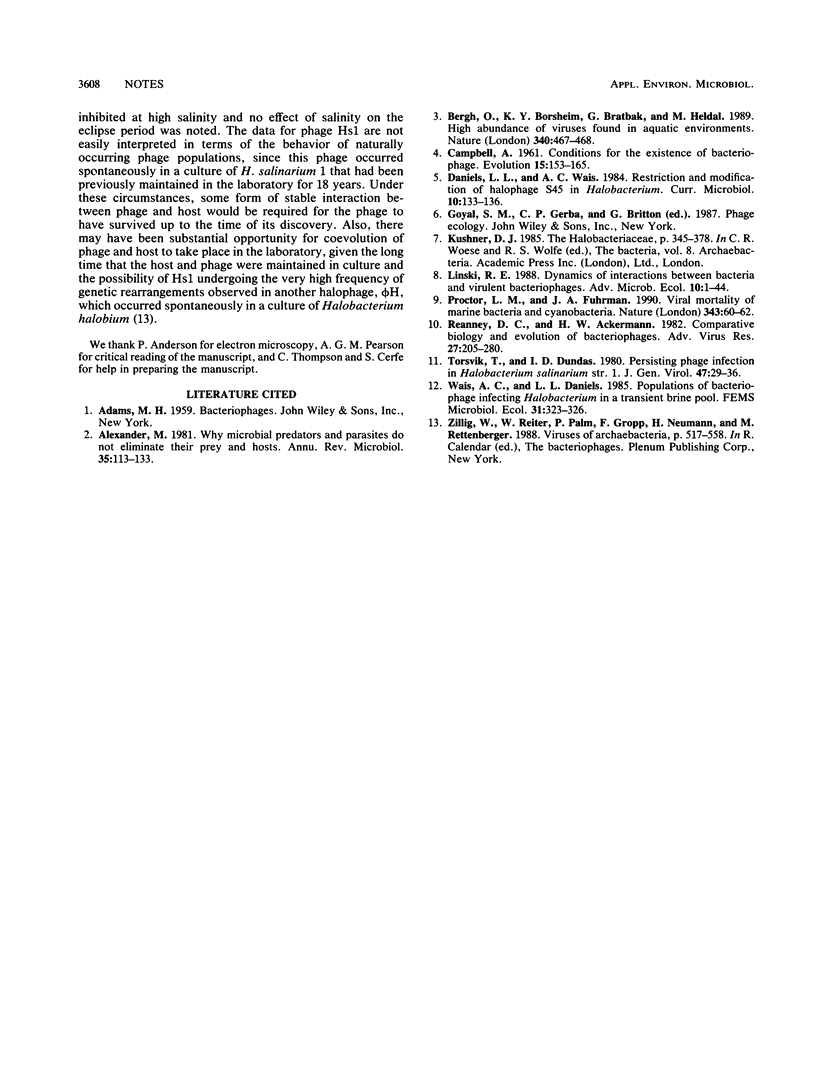Abstract
Increasing salinity reduces burst size and increases the latent period of infection of Halobacterium cutirubrum by lytic bacteriophage S5100. Cells become reversibly and persistently infected at saturation-level concentrations of NaCl. We propose that high salinity provides a natural refuge for sensitive host bacteria and that phage S5100 acts as a scavenger, proliferating when host viability is threatened by dilution of the environment.
Full text
PDF



Selected References
These references are in PubMed. This may not be the complete list of references from this article.
- Alexander M. Why microbial predators and parasites do not eliminate their prey and hosts. Annu Rev Microbiol. 1981;35:113–133. doi: 10.1146/annurev.mi.35.100181.000553. [DOI] [PubMed] [Google Scholar]
- Bergh O., Børsheim K. Y., Bratbak G., Heldal M. High abundance of viruses found in aquatic environments. Nature. 1989 Aug 10;340(6233):467–468. doi: 10.1038/340467a0. [DOI] [PubMed] [Google Scholar]
- Reanney D. C., Ackermann H. W. Comparative biology and evolution of bacteriophages. Adv Virus Res. 1982;27:205–280. doi: 10.1016/s0065-3527(08)60436-4. [DOI] [PubMed] [Google Scholar]


